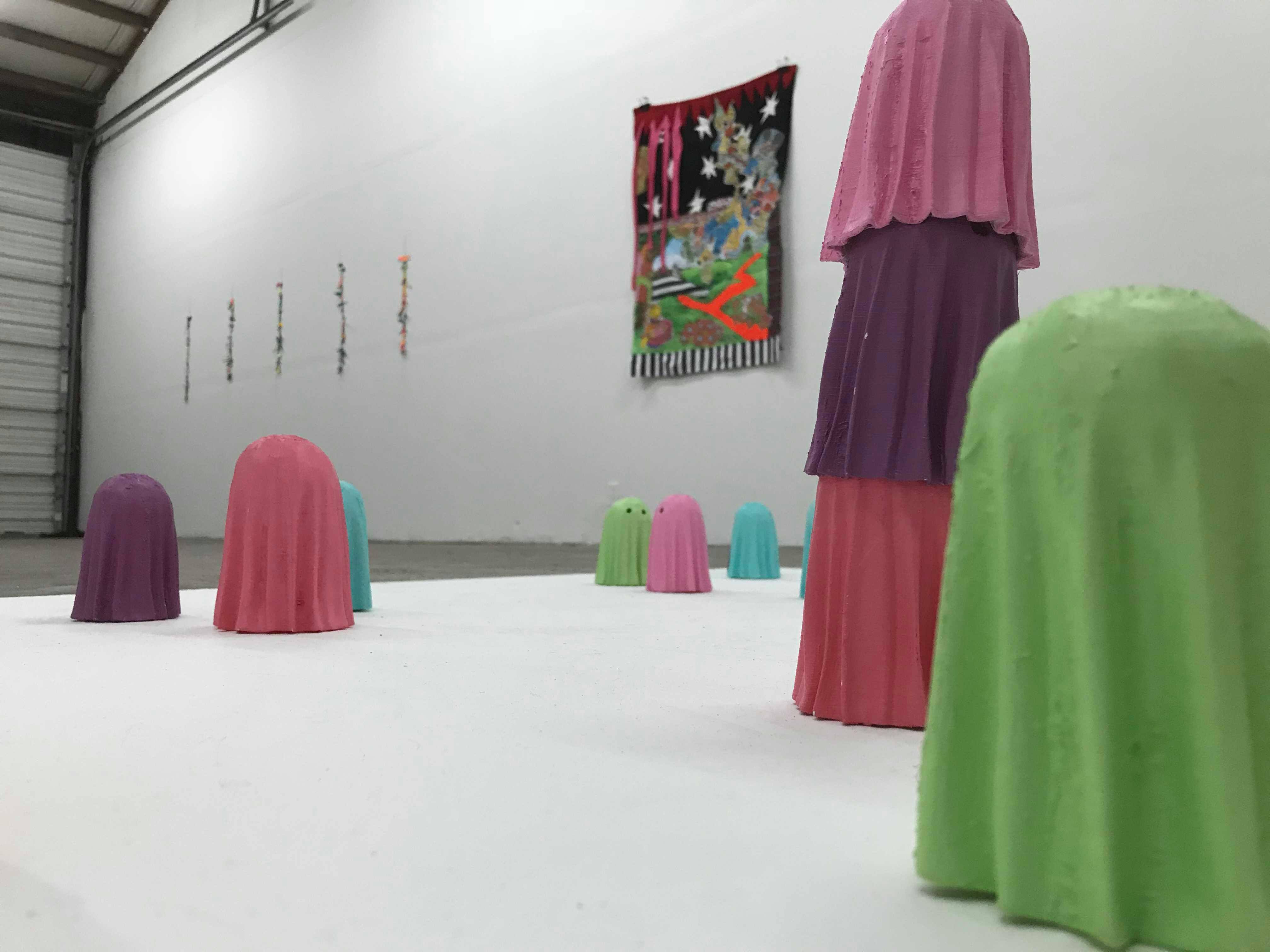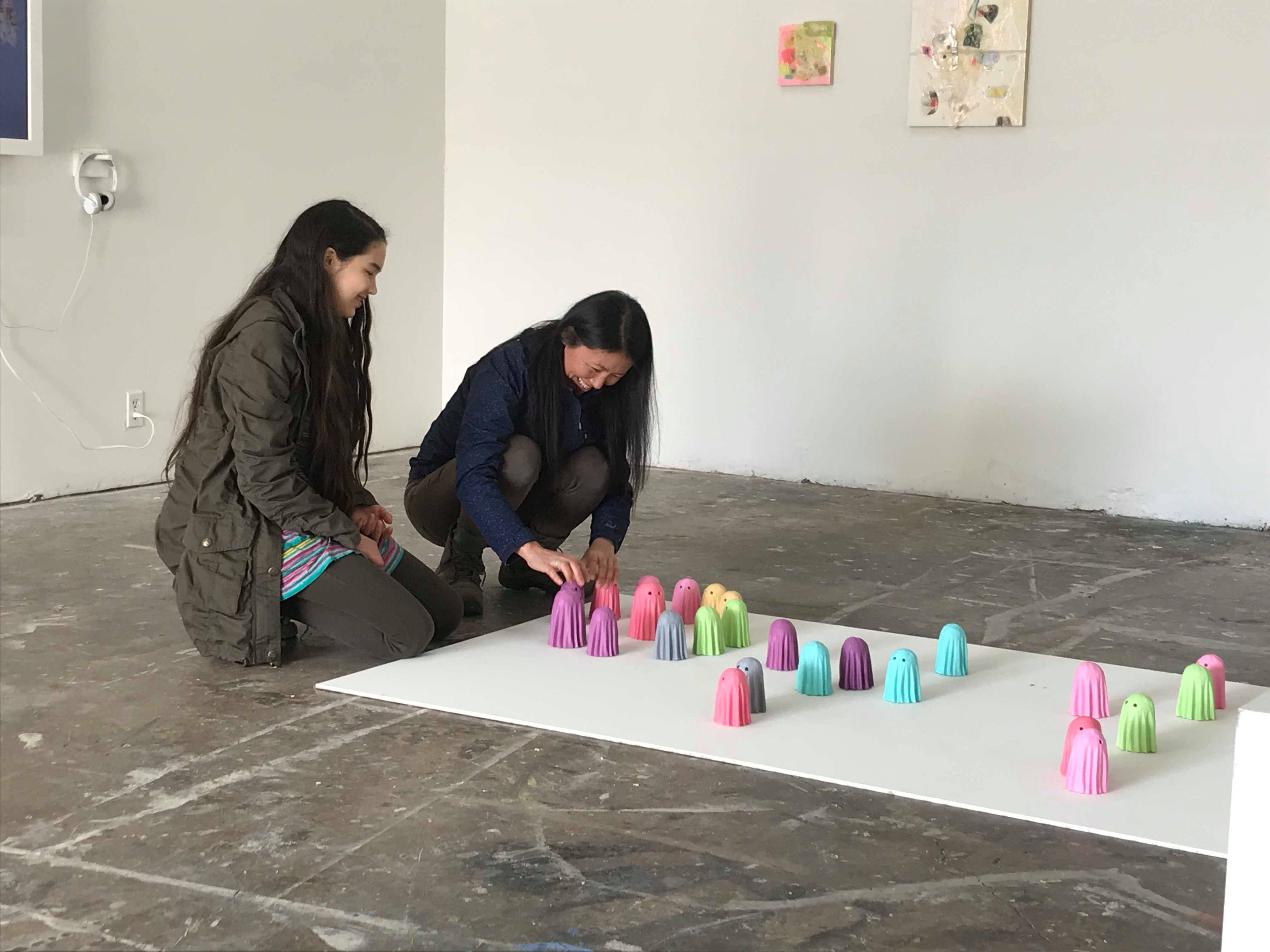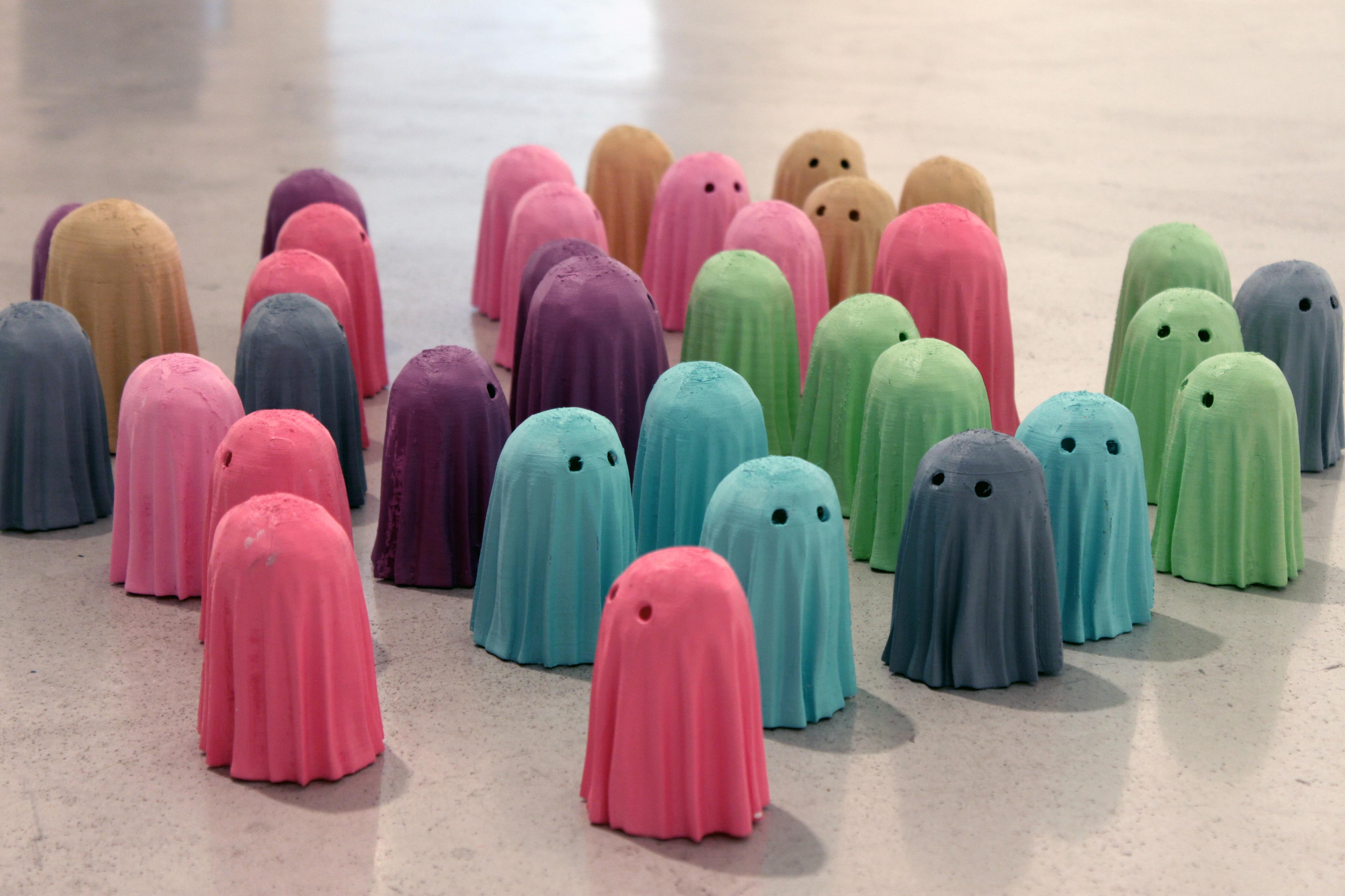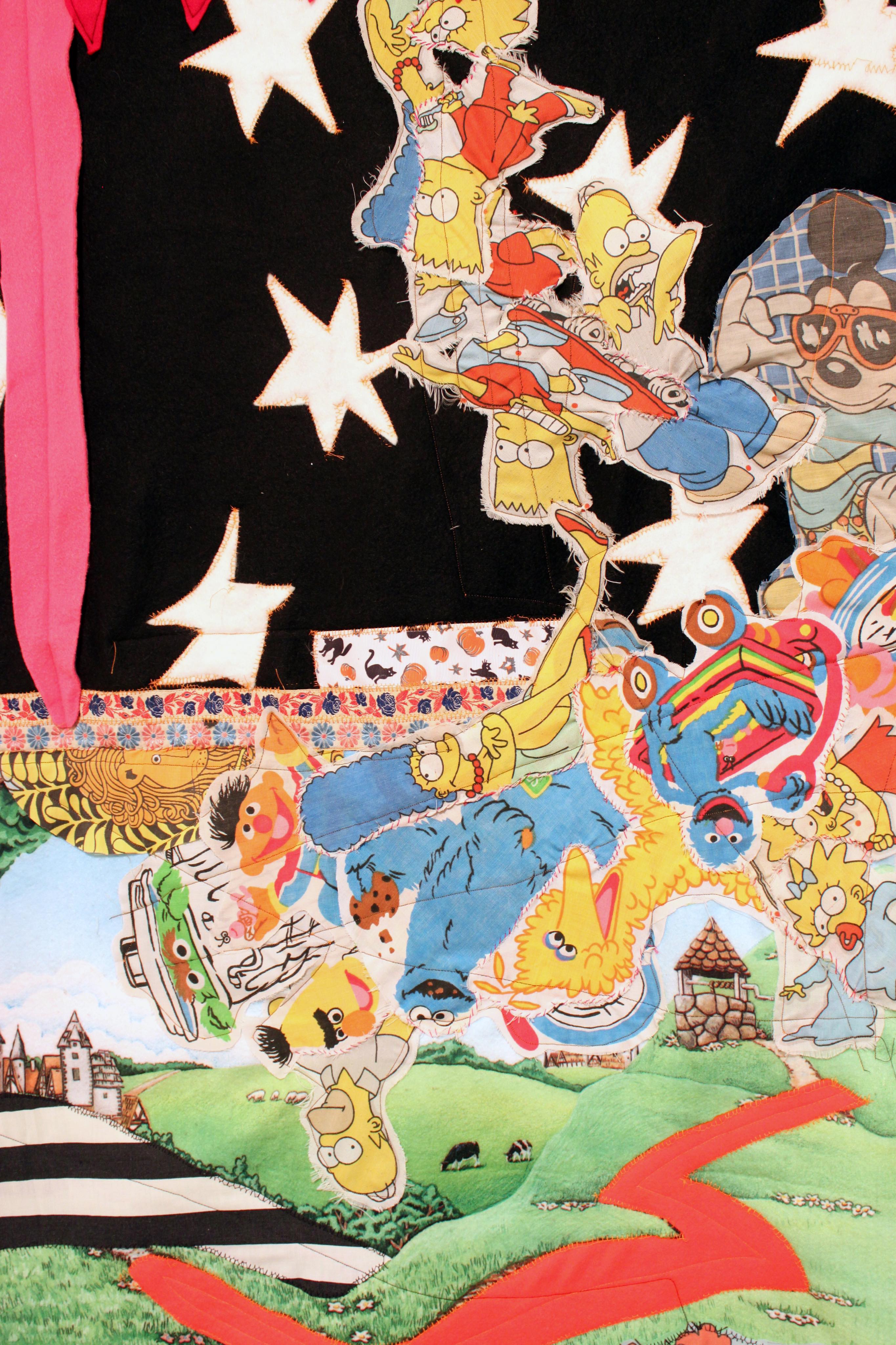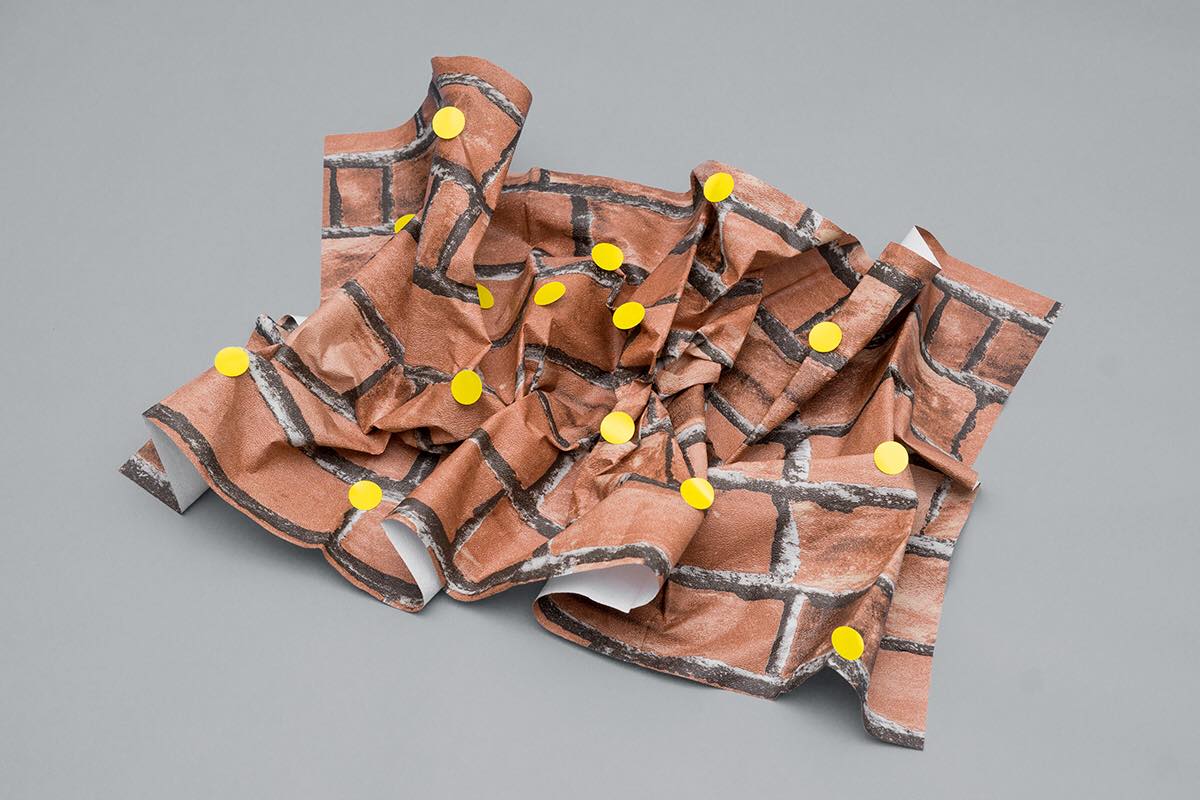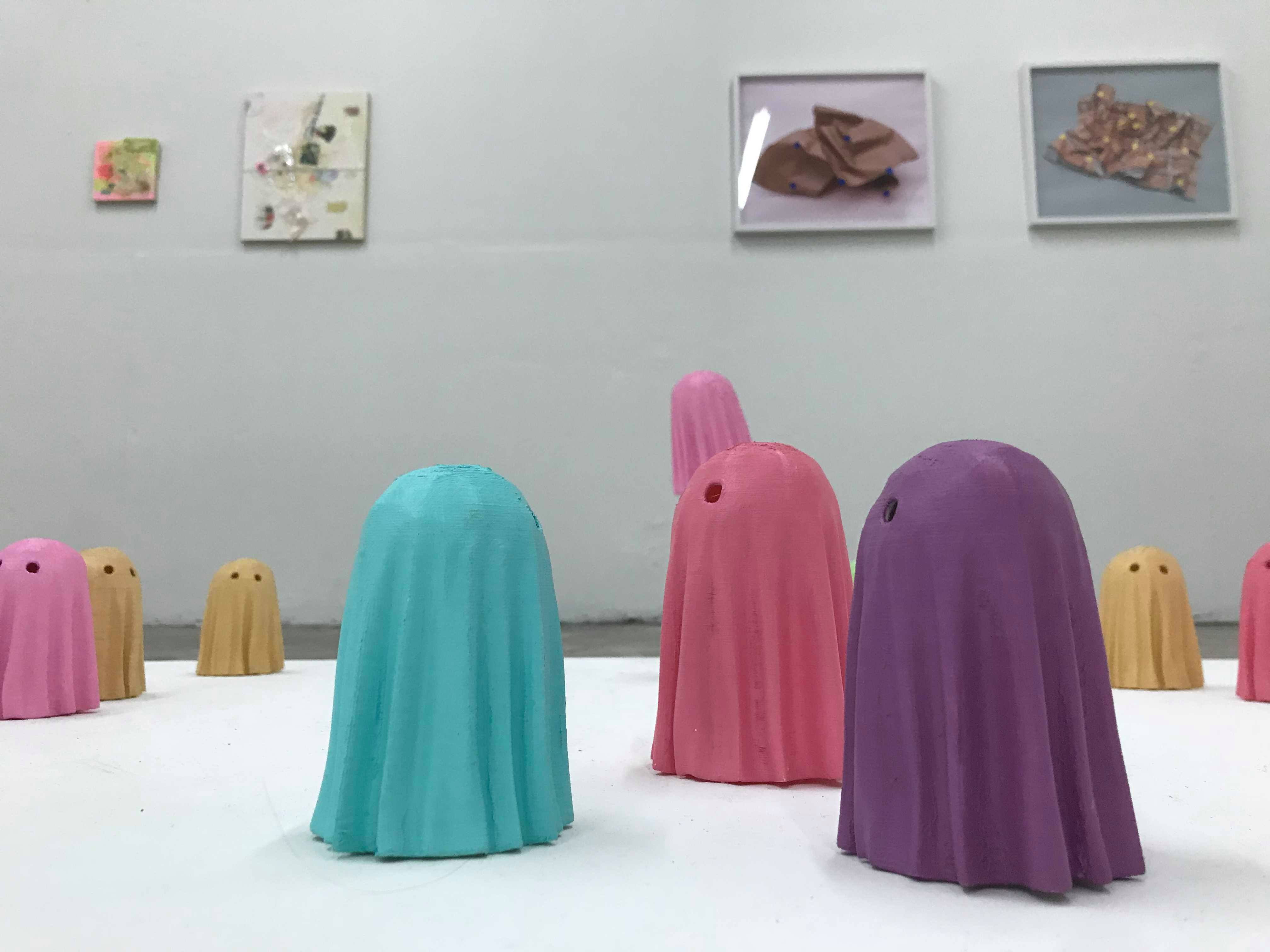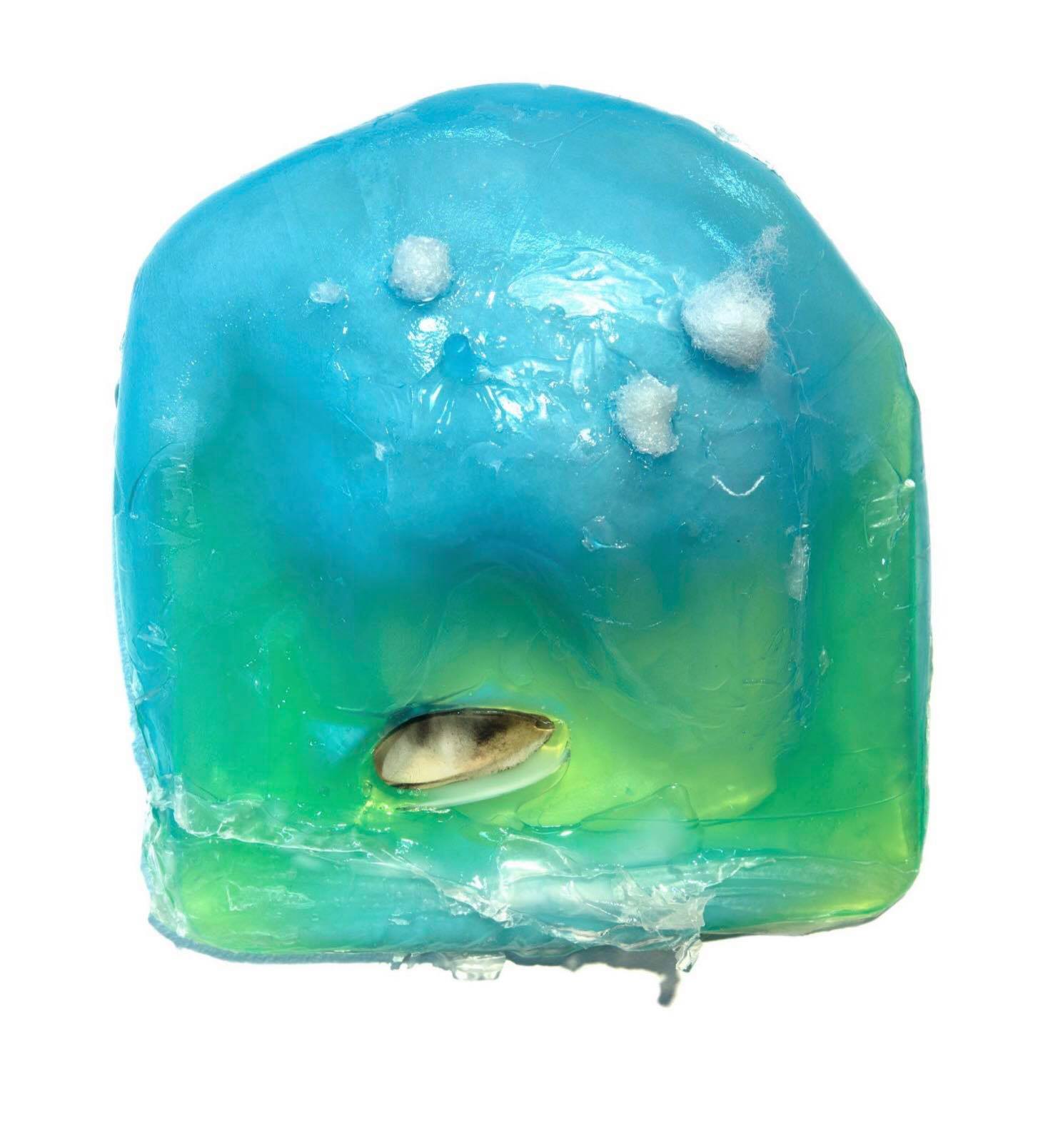Tooling Around — A riff on play and rigor, and the current show at Tropical Contemporary

A review of ‘Serious Business’ at Tropical Contemporary
by Agnese Cebere
“Art is a place where the artist feels what they are doing is more important than it actually is,” says Jacob Wren in his book ‘Authenticity is a Feeling’ (2018). His book is a review of 20 years of making performance work with PME-ART in Montreal, and a close examination of his own role as director of the pseudo-collective, and an artist with a profound wish to make authentic work. This question of authenticity and importance or conversely, triviality, can be posed within the framework of the concept of ‘play’ — the theme of a group show currently at Tropical Contemporary in Eugene, titled ‘Serious Business’ that includes work by Carmen Tiffany, Carey Lin, Eric Edvalson, and Lou Shafer.
‘Serious Business’ is an exhibition of overtly playful work, referencing childhood games and figures like Winnie the Pooh, bright and abundant use of color, and a focus on material and texture. It foregrounds the aesthetics of play: a return to something child-like, colorful, messy, thrown together yet very precisely placed, even repetitive. Carmen Tiffany’s video installation ‘Tut tut’ (2016) has the quality of the nagging refrain of a child obsessed, who watches the same cartoon a million times over. Repetition or iteration seems to be an important part of playing. You do the same thing in slightly different ways over and over again. Sometimes you do something radical. Often you destroy what you made in the first place. When you start to get precious about something it stops being play and enters into a different stage of the process, at least if we are talking about creative practice.
There are a million other things you could be doing, most of which are easier to argue for than making art. So why do we do it?
There is a kind of blind faith involved in the artistic process. When we are in the midst of making something it absorbs us and demands our attention. A false dichotomy between play and rigor seems to prevail, where play can only become rigorous if there is a specific end goal, in which case it somehow ceases to be play. Serious play strikes me as an accurate description of the creative process, something that mega-corporations like Google have already understood. Perhaps a delusional notion of importance is a necessary part of creativity? There are a million other things you could be doing, most of which are easier to argue for than making art. So why do we do it? We get an idea and we want to see it realized. We find ourselves tinkering with something, unable to tear ourselves away from it. There is an intrinsic motivation in the act of playing that produces something like an altered state. People generally stop making art when they have no room to play, when there is something else that is more important, like a career, a day job, financial stability, family, organizing that makes it possible for others to make art, you name it. In response to Wren, I’ll suggest that taking something to be important is simply to spend time on it and persist in the pursuit of seeing where it goes, often sacrificing other aspects of one’s life, however small. On the other hand I want to avoid the rhetoric of scarcity, because I think a creatively engaged life is nourishing and community building. We give up some things and gain others, and sometimes its out of our hands.
Play and contemporary art are siblings that belong together but don’t always get along. Somewhat counter-intuitively, art without play becomes indistinguishable from craft: something created for a specific purpose or end use, even if this purpose is simply decoration. Don’t get me wrong, I absolutely adore craft, but it differs from art in an important way. Art is purposeless in the sense that it is not for any particular end goal; its use-value is not its primary characteristic. It is more like a cluster of meaning created through the process of play, pretend, remix, accumulation, with a view to philosophical questioning. Art is both important and in some restricted sense “unproductive.” I suspect that the feeling of play or inconsequential making is key in the process of making something important. Locking oneself into creating something “meaningful” tends to be a dead-end and the end product is often contrived because of this very attitude of importance that doesn’t let the work happen. I would like to think of art making as playing around until meaning emerges. This does not mean that the material or subject matter is by default lighthearted, it can be anything, it is rather a question of the creative use of material as method. There are of course parameters and limitations, specific interests and points of view. They are all some of the things we play with when we make art.
Lou Shafer’s work is all gross textures, abject because they are so familiar yet not used in the way they were intended. ‘Pooling’ (2018) is a cut-up towel as a canvas for neon yellow paint, hair trimmings and a glossy finish. ‘Belly Thing’ (2018) looks like something you could eat but it also looks toxic like toilet cleaner, a piece of candy found after two years rotting under the dishwasher. ‘Bubbled Gum m y’ (2018) is made of what appears to be found scraps of different materials, essentially trash, encapsulated in resin on a piece of board, instantly taking me back to collecting random pieces of whatever I happened to find that appealed to me as a child, and again as an art student. (My sister would collect rocks and twigs and her pockets were always full. Once she dug up a couple of brass candlesticks from a sandbox that my parents still use).
All of Shafer’s pieces have a quality that outlasts the initial provocation because they have their own internal sense that is a knitting together of disparate elements able to resonate with the viewer on different levels. This is what I mean when I talk about the construction of meaning through play. Eric Edvalson’s Texture Maps (2017) are playfully coy, teasing with their colorful dots stuck on sculptures behind the surface of the photograph. Equally playful are Carmen Tiffany’s ‘Dope Ghosts’ (2016), seemingly modeling some kind of social interaction we are not privy to. Carey Lin’s animated video ‘Getting Into Shapes’ completed at Julia Oldham’s Opossum House in 2018, embodies an aesthetic of old school cartoons where different shapes interact in simple but not always obvious ways. They are silhouettes of tools and objects employed in schemes that go beyond their intended use, creating a new relationship between form and function through the flattening of the animation.
Play is doing something and looking to see what happens, making and re-making, and taking the results seriously. To be able to tell yourself you are only playing is liberating and takes the pressure off, even if you are secretly hoping it will turn into something important. The works on view in ‘Serious Business’ are all transparent in their process of play and put it on display in its most blatant form, showing the layering, stitching, and material-as-ready-made as the driving forces of the work, clearly illustrated by Carey Lin’s ‘Nobody Said Not To (Scrap Garlands),’ 2016, and Carmen Tiffany’s ‘Falling Stars’ (2016). ‘Serious Business’ breaks the estrangement between the finished art product and the playful process of making, reminding us to let some air into the stuffy white cube and give ourselves up to play.
The opening reception for ‘Serious Business’ was on November 2, with additional open hours Saturdays 11/3, 11/10, and 11/17 from 1-4pm at Tropical Contemporary in Eugene.
For more information and artist statements go to https://www.tropicalcontemporary.space/serious-business/
Images courtesy of Tropical Contemporary.
Agnese Cebere is an artist, dancer, and filmmaker based in Eugene, Oregon. She earned her BA in Intermedia Art at Edinburgh College of Art, Scotland. She recently finished her MA in Media Studies at The New School, New York.
